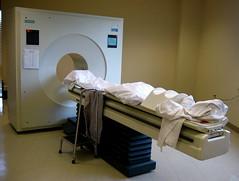 It is not always easy to differentiate between a preschooler who has ADHD and a preschooler who is, well, acting “typical” for his or her age. Researchers that have used brain imaging scans on young children have found something interesting. There is a difference in the brain development of very young children who have early symptoms of ADHD that is not the same as the brain development of their peers.
It is not always easy to differentiate between a preschooler who has ADHD and a preschooler who is, well, acting “typical” for his or her age. Researchers that have used brain imaging scans on young children have found something interesting. There is a difference in the brain development of very young children who have early symptoms of ADHD that is not the same as the brain development of their peers.
It can sometimes be difficult to determine if a preschooler, or younger child, is exhibiting symptoms of ADHD. This becomes rather obvious to parents that take their preschooler with them to the grocery store. It’s typical for preschool aged children to be attracted by several dozen random, but interesting, foods, treats, and toys that can be found as you shop. The question becomes, does this impulsiveness and short attention span mean that your child has ADHD, or is it just something “normal” preschoolers are inherently like?
The earlier that a child is diagnosed with ADHD, the earlier that the child can receive treatment. Obviously, the sooner that you can start treatment, the better the results will be. This means that anything that can be reliably used as a tool that indicates that a child has ADHD can be extremely helpful.
Researchers have been using magnetic resonance imaging (MRI) to scan images of the brains of preschoolers in order to see if there was an observable difference between kids who had ADHD and kids who did not. The current study looked at 26 preschoolers, half of which had ADHD symptoms, and half of which did not.
They found that the two groups had differences in a part of the brain called the caudate nucleus. It is a small structure that is located in the subcortical region of the brain, and it has been associated with cognitive and motor control. The preschoolers who had ADHD had “significantly reduced” caudate volumes, in comparison to the kids who did not have any ADHD symptoms.
The researchers are planning on following the children in the study, to see if the abnormalities go away as the child ages, or if they are still present. This study was one of the first to look at children who were four or five years old. Other studies have focused on children who were age seven or older. In any case, it seems that a brain scan could, potentially, be used as a tool that can help with early identification of ADHD in very young children.
Image by Liz West on Flickr

